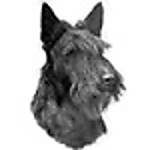Quoted Text
Hello Tom,
Your knowledge and recollections, not to mention your time, are most appreciated. I respect those who use their talents to record history and write books. Coupling what they write with what veteran's share provides a wealth of information.
I had always thought how much better a specialized scout vehicle like the -114 had to be for the mission over the -113. Being much smaller and better armed just struck me as an improvement. But, that opinion was based on technical specs and outward appearances.
I recall very heated arguments when the CFV was being considered as a replacement for the tracks in scout platoons concerning it's comparative size. Since the Bradley has proven it's worth for so many years, I doubt that there are too many soldiers who would rather trade back for the M-113A2 at this point. Although, I think we missed the mark by not adopting the AIFV version of the -113.
I never would have thought that the M-139 would have been such a problem being of Swiss origin. Was there ever a proper repair or fix made for the malfunctions?
I finally was able to see a very well maintained M-114 that was open. It was in the gray desert MERDC pattern and it looked like it would'nt take a whole lot to completely restore it. Unfortunately, it was in storage for use as a hard target. When I spoke to the local military museum director about rescuing it and a T-62 at the same location she was not interested.
Tom, thank you again.
Respectfully,
Allen
Allen,
About the M114 and the concept of Scouts and the 'right' vehicle:
The 114 concept was the right idea that was just ruined by poor engineering. It was the right size, very maneuverable, and even when armed with the .50 cal could take care of itself when confronted by a BRDM or anything similar. The 20mm gun put too much strain on an already questionably designed powered cupola that was adapted for the M114A1 with the .50 cal. NOTE - they were tested (and rejected) in Vietnam by the ARVN. Somebody should have taken notice right then and there, and scrapped the entire program...just my opinion.
The M139 20mm was a very accurate weapon that unfortunately was extremely maintenance intensive, and affected by the least amount of dirt or dust. Stoppages were common, and it was considered a major victory if we could fire off the contents of one feed tray load at a range without a failure. The gun as I've said, had a specialized tool kit for assembly and disassembly. There was no way to quickly field strip and clean it....it needed to be dismounted from the mount and torn down completely. All or nothing. The gun's feed mechanism was a separate component (it was mounted on top of the gun inside of the mount) that had to be carefully aligned and synched prior to firing, and in some cases needed to have it done again when changing belts of ammo in the feed tray.
There was a lot of turmoil and flux within the Army at the time concerning Scouts and what was the proper vehicle for us...the M114 concept was more or less the 'classic' Light Scout approach, where the vehicle was intended to transport a reporting/artillery observation team around. Our main weapon was really a good radio, and pair of binoculars.
Battalion Scout Platoons with M114's consisted of 10 vehicles (9 M114's, and 1 M113) the 114's were organized into 4 Scout Squads of 2 vehicles each, and the 9th 114 was for the Platoon Leader. The M113 was for the Platoon Sgt, and functioned as an ad hoc logistics and (sometimes) recovery vehicle.
Scout Platoons later went to a 7 vehicle TO&E, with 4 M113s and 3 M150s: 1 M113 was for the Platoon Leader, and the the others were organized into 3x2 vehicle squads of 1 M113 and 1 M150....M901's replaced the M150s as time went by.
The organization above was the first time the Army moved away from the Light or 'Classic' Scout idea, and into a sort of defensive armor attrition concept. The mission statements never changed, but in practice the emphasis started to shift more towards an anti-armor role, while screening the supported unit.
Many of us 'old' Scouts thought the approach above was a mistake, but looking back I think I understand what the Army might have been trying to do (at least in Europe)....whittle down the WP armor any way possible, and as far forward as possible.
I never did operate or crew an M3 Bradley...I saw a few as they were entering service, and my initial impression was that it was too big....I was reminded of the the WW2 M3 Lee/Grant for it's height when I first saw one head on. I'm not qualified to comment any further about the M3. Remember, I was at the time an 'Old Scout', trained in the Classic Mode, and since people sometimes are resistant to change, I guess I was too.
About pattern painted camouflage...my personal opinion was, and still is that it was a waste of time, money, and effort. (Speaking as a user - as a modeler I love it!) In a verdant setting a solid green or brown paint job, in my mind works best. Any vehicle after getting a coating of dust or mud looks like it's surroundings very quickly anyway. The whole story of US Army camouflage is intriguing and needs to be told though.
Tom
 )
)


 )
)




)






 Unfortunately I've searched for the missing Appendices to no avail...
Unfortunately I've searched for the missing Appendices to no avail... )
)

 )
)





